



After visiting an exhibition at the Kunstmuseum Basel, the students of FHWK translated aspects of specific artworks into a new sensory dimension, pushing the boundaries of how we interact with art. And how we think of museum spaces.
Commissioned by:
Hochschule für Gestaltung und Kunst Basel (FHNW) as part of International Workshop Week (IWW)
In recent years, cultural institutions have been challenged to rethink the presentation of their exhibits in increasingly inclusive and dynamic ways.
Inspired by this development, participants of this workshop used interactive technologies to create interventions that reveal new layers and meanings of a chosen artwork. The groups consisted mainly of Industrial Design Bachelor students, with a few participants from the Master's programme.


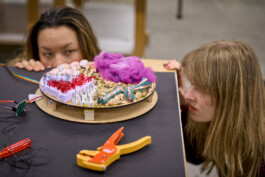





Fog Screen: Responding to a painting of oceans and waves, this group added movement and atmosphere through fog, enriching the visual with spatial depth and evoking a more immersive, dreamlike perception.
Fog Screen: Responding to a painting of oceans and waves, this group added movement and atmosphere through fog, enriching the visual with spatial depth and evoking a more immersive, dreamlike perception.
VibraSense: Drawing from two contrasting artworks, the group designed a tactile, sound-enhanced experience that invites visitors to explore the fine line between delight and disgust.
VibraSense: Drawing from two contrasting artworks, the group designed a tactile, sound-enhanced experience that invites visitors to explore the fine line between delight and disgust.
Haptic Painting: Inspired by a painting’s bold color fields, this group translated visual elements into tactile textures and sound, allowing visitors to feel and hear color.
Haptic Painting: Inspired by a painting’s bold color fields, this group translated visual elements into tactile textures and sound, allowing visitors to feel and hear color.
Keep the Distance: Annoyed by proximity alarms during the museum visit, this group reimagined the warning sound as a playful, sonic experience — responsive layers of nature sounds subtly reshape how visitors approach the work.
Keep the Distance: Annoyed by proximity alarms during the museum visit, this group reimagined the warning sound as a playful, sonic experience — responsive layers of nature sounds subtly reshape how visitors approach the work.
The participants' process and final designs illuminate the potential of design for the senses - each in their own way. From clever responses to the spatial constraints of the museum, to poetic interpretations of specific artworks, to new multi-sensory vocabularies, the results show that the students freely carried out the brief and were quick to embrace new techniques.
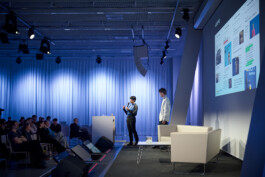


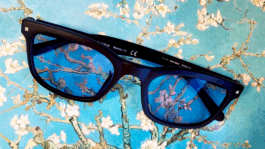
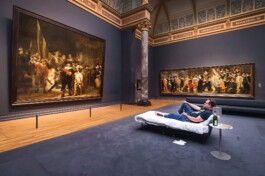
Van Abbemuseum: With over 25 multi-sensory tools, including texts in Braille, scent interpretations, tactile drawings and soundscapes, Delinking and Relinking represents the first, fully multi-sensory collection display in the Netherlands
Van Goghmuseum: Feeling Van Gogh is an interactive programme especially for visitors who are blind or visually impaired with their seeing friends, family members and carers.
Van Goghmuseum: Visitors with colour vision deficiency can borrow special glasses during their visit. The EnChroma glasses make colours in the paintings appear brighter and more saturated.
Rijksmuseum Amsterdam: The 10 millionth visitor won a prize to spend a night alone with Rembrandt's "The Night Watch"
The issue of accessibility does not only affect people with sensory impairments or differences. Finding meaning in artworks can also be a convoluted and difficult process for ”typical” museum visitors. In a short presentation, Cream on Chrome showed how art institutions such as the Van Gogh Museum Amsterdam or the Van Abbe Museum Eindhoven aim to respond to the need for inclusion and accessibility - be it through museum education or technical innovations.
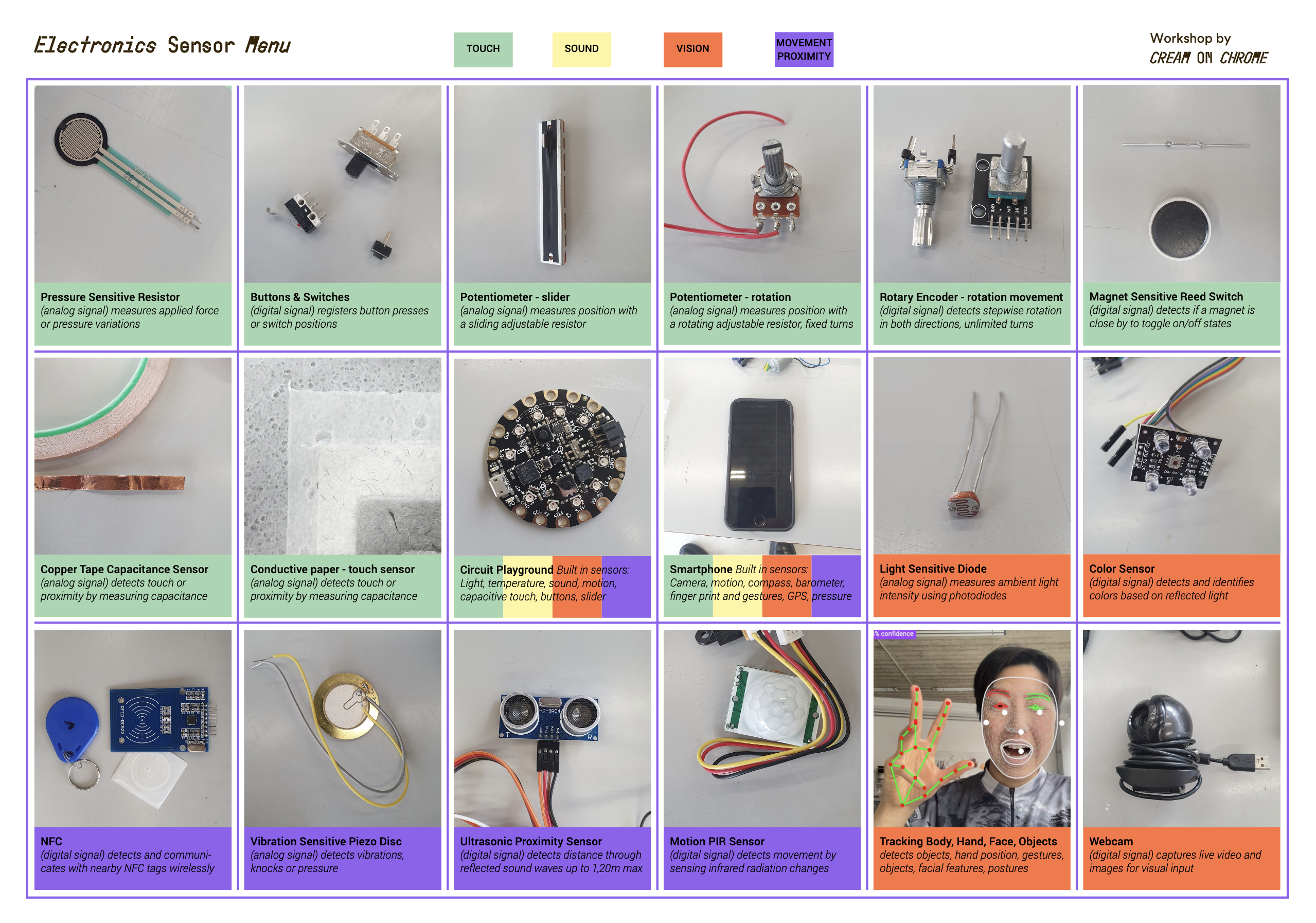
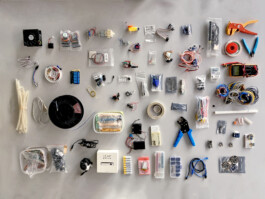
Electronics "sensor menu"
Electronic modules available with corresponding example scripts to get started quickly.


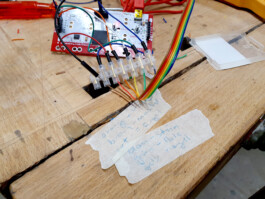
Drawing from their experience in electronic and digital prototyping, Cream on Chrome gave students a crash-course in interactive design techniques: Arduino microcontroller boards allowed groups to use various sensors and actuators quickly, and a demonstration of TouchDesigner fundamentals opened up the area of node-based coding for real-time multimedia design.
During five days the students
YEAR
2025
LOCATIONS
Hochschule für Gestaltung und Kunst Basel (CH)
DESIGN TEAM
Jonas Althaus, Martina Huynh
RESPONSIBILITIES
Mentoring, Lectures, Tech support, Programme development
COLLABORATORS
Tabitha Skye Anderton (intern)
PHOTOGRAPHER
André Hönicke
STUDENTS
Charlotte Adank, Lea Thürlemann, Benedict Weber, Eric Werro, Silvan Lupp, Aaron Joss, Seraphin Kammermann, Linda Ammann, Gina Carillo Guadarrama, Ladina Hug, Timon Wullschleger, Anna Magdalena Michal, Ligia Tarcea




After visiting an exhibition at the Kunstmuseum Basel, the students of FHWK translated aspects of specific artworks into a new sensory dimension, pushing the boundaries of how we interact with art. And how we think of museum spaces.
Commissioned by:
Hochschule für Gestaltung und Kunst Basel (FHNW) as part of International Workshop Week (IWW)
In recent years, cultural institutions have been challenged to rethink the presentation of their exhibits in increasingly inclusive and dynamic ways.
Inspired by this development, participants of this workshop used interactive technologies to create interventions that reveal new layers and meanings of a chosen artwork. The groups consisted mainly of Industrial Design Bachelor students, with a few participants from the Master's programme.








Fog Screen: Responding to a painting of oceans and waves, this group added movement and atmosphere through fog, enriching the visual with spatial depth and evoking a more immersive, dreamlike perception.
Fog Screen: Responding to a painting of oceans and waves, this group added movement and atmosphere through fog, enriching the visual with spatial depth and evoking a more immersive, dreamlike perception.
VibraSense: Drawing from two contrasting artworks, the group designed a tactile, sound-enhanced experience that invites visitors to explore the fine line between delight and disgust.
VibraSense: Drawing from two contrasting artworks, the group designed a tactile, sound-enhanced experience that invites visitors to explore the fine line between delight and disgust.
Haptic Painting: Inspired by a painting’s bold color fields, this group translated visual elements into tactile textures and sound, allowing visitors to feel and hear color.
Haptic Painting: Inspired by a painting’s bold color fields, this group translated visual elements into tactile textures and sound, allowing visitors to feel and hear color.
Keep the Distance: Annoyed by proximity alarms during the museum visit, this group reimagined the warning sound as a playful, sonic experience — responsive layers of nature sounds subtly reshape how visitors approach the work.
Keep the Distance: Annoyed by proximity alarms during the museum visit, this group reimagined the warning sound as a playful, sonic experience — responsive layers of nature sounds subtly reshape how visitors approach the work.
The participants' process and final designs illuminate the potential of design for the senses - each in their own way. From clever responses to the spatial constraints of the museum, to poetic interpretations of specific artworks, to new multi-sensory vocabularies, the results show that the students freely carried out the brief and were quick to embrace new techniques.
The issue of accessibility does not only affect people with sensory impairments or differences. Finding meaning in artworks can also be a convoluted and difficult process for ”typical” museum visitors. In a short presentation, Cream on Chrome showed how art institutions such as the Van Gogh Museum Amsterdam or the Van Abbe Museum Eindhoven aim to respond to the need for inclusion and accessibility - be it through museum education or technical innovations.





Van Abbemuseum: With over 25 multi-sensory tools, including texts in Braille, scent interpretations, tactile drawings and soundscapes, Delinking and Relinking represents the first, fully multi-sensory collection display in the Netherlands
Van Goghmuseum: Feeling Van Gogh is an interactive programme especially for visitors who are blind or visually impaired with their seeing friends, family members and carers.
Van Goghmuseum: Visitors with colour vision deficiency can borrow special glasses during their visit. The EnChroma glasses make colours in the paintings appear brighter and more saturated.
Rijksmuseum Amsterdam: The 10 millionth visitor won a prize to spend a night alone with Rembrandt's "The Night Watch"
Drawing from their experience in electronic and digital prototyping, Cream on Chrome gave students a crash-course in interactive design techniques: Arduino microcontroller boards allowed groups to use various sensors and actuators quickly, and a demonstration of TouchDesigner fundamentals opened up the area of node-based coding for real-time multimedia design.



During five days the students
PROJECT TYPE
Teaching
YEAR
2025
LOCATIONS
Hochschule für Gestaltung und Kunst Basel (CH)
DESIGN TEAM
Jonas Althaus, Martina Huynh
RESPONSIBILITIES
Mentoring, Lectures, Tech support, Programme development
COLLABORATORS
Tabitha Skye Anderton (intern)
PHOTOGRAPHER
André Hönicke